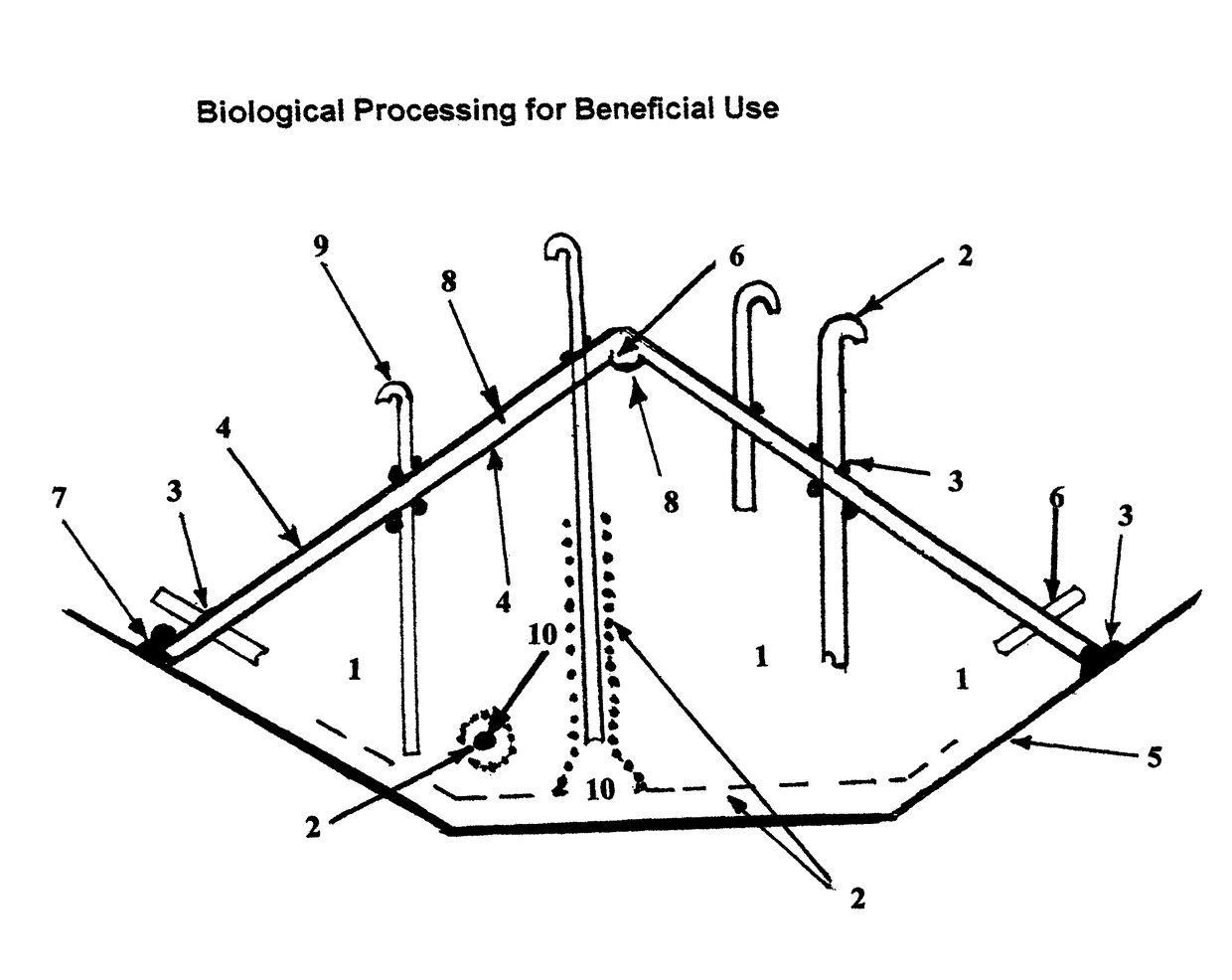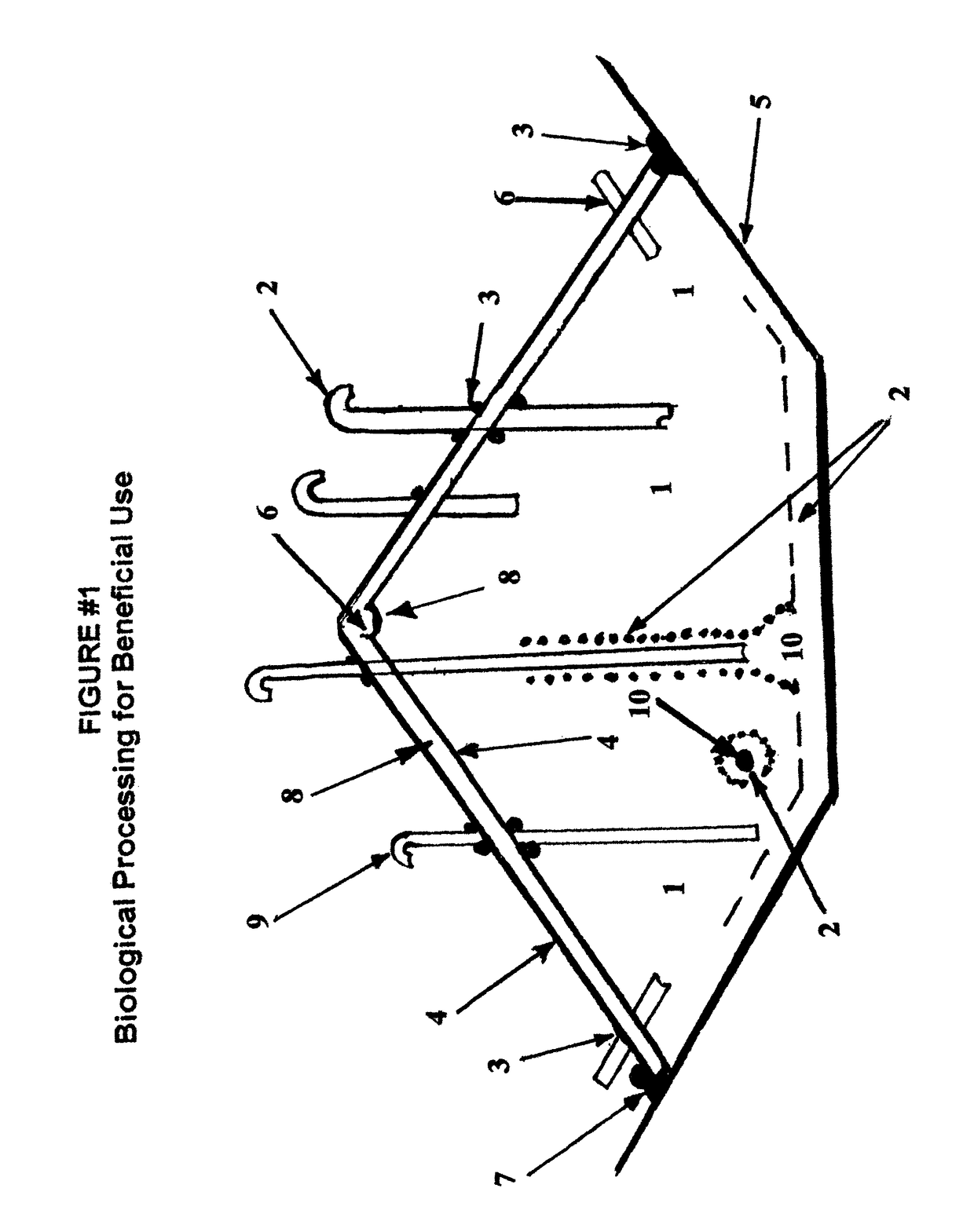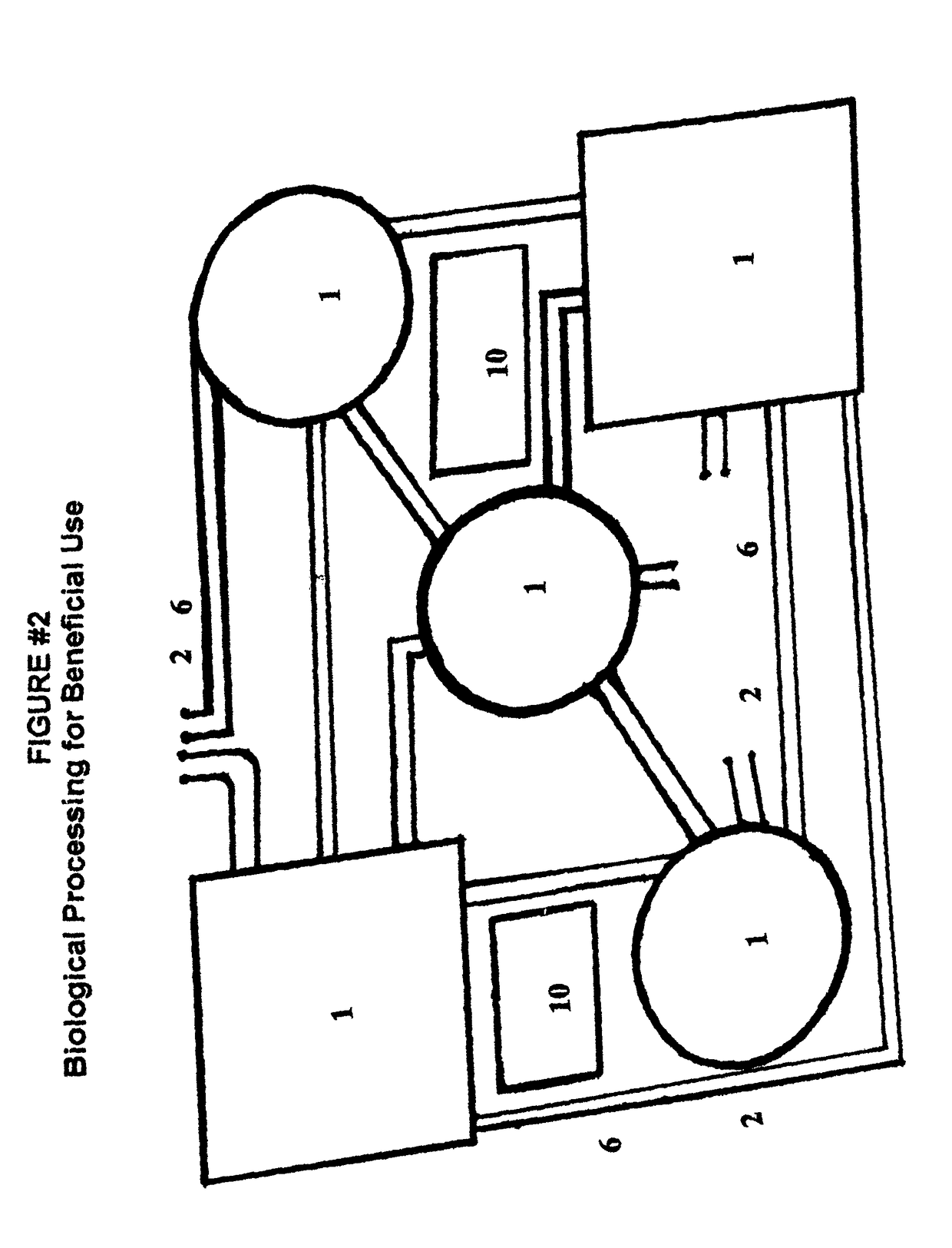Accelerated processing
a technology of accelerated processing and solid waste, applied in the field of accelerated processing, can solve the problems of inability to discharge into the environment, inability to effectively use solid waste during the useful life of most solid waste facilities, and slow anaerobic degradation of current solid waste facilities, etc., to achieve the effect of reducing cost, increasing vitality, and/or growing plants
- Summary
- Abstract
- Description
- Claims
- Application Information
AI Technical Summary
Benefits of technology
Problems solved by technology
Method used
Image
Examples
Embodiment Construction
[0039]The current invention consists of a “system”, comprised at the minimum, of one or more areas that are being treated and the equipment to manipulate the solids being treated or decontaminated and the liquid (or liquid-solid) mixture that is being moved in the system. One or more liquid storage containments for the circulated liquid or circulated liquid-solid mixtures would be normally considered part of the system. A wide array of equipment and vessels could be attached to the system and become a component of it. The liquid carries with it whatever it picks up as it is moved in the solids. Cycling, circulation, circulating, or flow all imply the collection and reintroduction of the “liquid”. Movement or flow of the liquid with the solid results in improved processing.
[0040]ACCELERATED PROCESSING is the preparation, mixing, cultivating, sheltering, harvesting, and manipulation of organisms and additives to process organic materials, waste, and contaminated materials into benefic...
PUM
| Property | Measurement | Unit |
|---|---|---|
| temperature | aaaaa | aaaaa |
| resistance | aaaaa | aaaaa |
| size | aaaaa | aaaaa |
Abstract
Description
Claims
Application Information
 Login to View More
Login to View More - R&D
- Intellectual Property
- Life Sciences
- Materials
- Tech Scout
- Unparalleled Data Quality
- Higher Quality Content
- 60% Fewer Hallucinations
Browse by: Latest US Patents, China's latest patents, Technical Efficacy Thesaurus, Application Domain, Technology Topic, Popular Technical Reports.
© 2025 PatSnap. All rights reserved.Legal|Privacy policy|Modern Slavery Act Transparency Statement|Sitemap|About US| Contact US: help@patsnap.com



